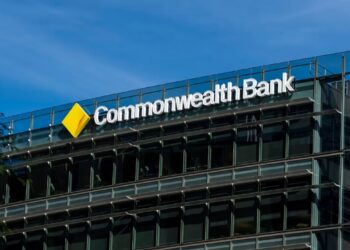Labor’s recalibration of the stage three tax cuts, confirmed last week, means that individuals earning under $150,000 will benefit most from the impending changes to tax cuts.
Namely, under the changes, the 19 per cent tax rate that applies to incomes between the $18,200 tax-free threshold and $45,000 will be lowered to 16 per cent. Those earning between $45,000 and $135,000 will be taxed at 30 per cent, while the 37 per cent tax rate will be reinstated and apply to incomes between $135,000 and $190,000, after which the 45 per cent rate will apply.
Originally, the tax cuts were slated to abolish the 37 per cent tax bracket applied to incomes between $120,000 and $180,000 and reduce the 32.5 per cent tax rate to 30 per cent for all incomes between $45,000 and $200,000 from 1 July.
With inflation trending down but still above the Reserve Bank’s (RBA) target range, the worry is that those set to reap the rewards come July may spend their extra cash on discretionary items, putting further pressure on the economy.
While the common understanding is that the marginal propensity to consume is higher for the lower income, Wilson Asset Management portfolio manager Matthew Haupt has assured that any impact is likely to be limited.
“People only spend when there is confidence in the economy,” Mr Haupt told InvestorDaily on an upcoming podcast.
He noted: “Confidence has been quite poor for a long time.”
Mr Haupt explained that future tax cuts are more likely to be saved or put towards debt reduction.
“It would be hard to see a huge kick in retail spending in Australia off these tax cuts. Yeah, it would be more for non-discretionary, it would be used for that sort of stuff.
“The impact will be quite muted I would have thought,” he continued.
Similarly, last week, Westpac’s Luci Ellis said changes at the margin of the tax relief from July do not change the overall macroeconomic story.
Touching on the common consensus mentioned earlier, that lower-income and middle-income taxpayers tend to spend more out of every dollar of extra income, Ms Ellis argued that since lower-income households have seen stronger income growth on average than their higher-income peers, “those marginal propensities to consume might not be a good guide to current behaviour”.
Moreover, Ms Ellis explained that by retaining the 37 per cent bracket, “the system is not flattened out as much as originally planned”, meaning that more households will still face some fiscal drag, and fiscal policy will retain more of its automatic stabilising properties.
What’s next?
For Mr Haupt, the bigger concern regarding the government is which industry they might “attack next”.
“When I look at the Australian economy, it is whether the government intervenes in any more industries to try and recoup or help the fiscal position, not that it needs helping,” he said.
“The banks were under pressure, last year there was talk of taxes on banks. Then [the government] seemed to go after gaming and alcohol and pokies.
“So for me, this year is trying to work out what they are going to attack next, whether it’s insurers or health insurers or telcos.”
This, Mr Haupt said, is going to be “the real issue” this year.
“The tax cuts are a bit of a side issue I think, they were already factored in as a positive fiscal impulse.
“The mix is slightly different but the mix change I don’t think will be a key driver of what’s going to happen in the economy this year,” Mr Haupt concluded.







